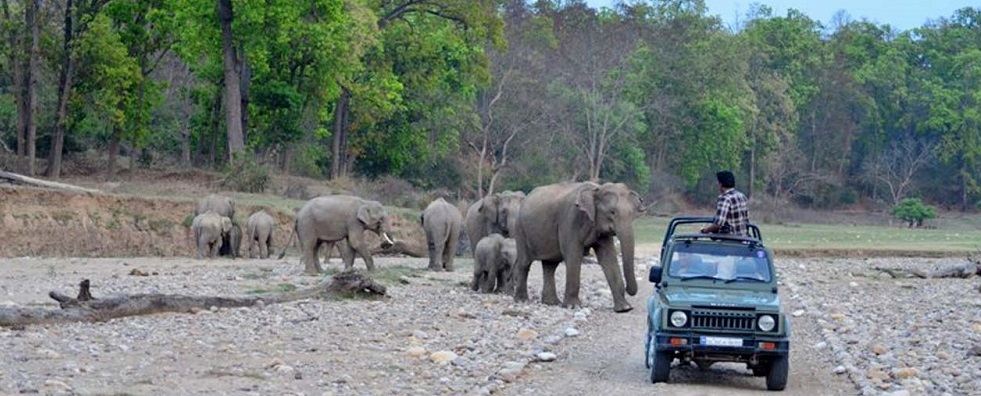Rajaji National Park stands as a testament to India's rich biodiversity and natural beauty. Spread across three districts—Haridwar, Dehradun, and Pauri Garhwal—this expansive park is a haven for wildlife enthusiasts, adventure seekers, and anyone looking to reconnect with nature. My recent visit to Rajaji National Park left me spellbound, and I'm eager to share the essence of this tranquil retreat.
The Enchanting Flora:
As I entered the park, the first thing that captivated my senses was the lush greenery that enveloped the surroundings. The park boasts a diverse range of flora, including sal forests, mixed deciduous forests, and grasslands. The air was infused with the sweet fragrance of blooming flowers and the earthy scent of the forest floor. I couldn't help but marvel at the sheer beauty of nature's canvas.
Wildlife Encounters:
Rajaji National Park is a haven for wildlife enthusiasts, offering a chance to witness a myriad of animal species in their natural habitat. The park is home to the majestic Asian elephant, which roams freely across its vast expanse. During my safari, I was fortunate enough to spot a herd of these gentle giants, their tusks gleaming in the dappled sunlight.
Apart from elephants, the park is home to tigers, leopards, deer, and a variety of bird species. The thrill of catching a glimpse of these creatures in their natural environment is an experience that words can hardly do justice. The park is a birdwatcher's paradise, with over 300 species of birds, including the Great Hornbill and the Crested Kingfisher.
Safari Adventures:
One of the best ways to explore Rajaji National Park is through a safari. The park offers both jeep and elephant safaris, each providing a unique perspective of the wilderness. I opted for a jeep safari, allowing me to cover a larger area and witness the diverse landscapes within the park. The experienced guides shared fascinating insights about the flora and fauna, adding depth to my safari experience.
The Glistening Ganges:
Rajaji National Park is blessed with the presence of the sacred Ganges River, which forms its western boundary. A visit to the park is incomplete without a serene riverside stroll. The calming sound of the flowing river, coupled with the panoramic views of the surrounding hills, creates a picturesque setting that soothes the soul.
Conservation Efforts:
Beyond its natural splendor, Rajaji National Park stands as a symbol of conservation efforts in India. The park is named after C. Rajagopalachari, a prominent leader and the last Governor-General of India. The dedicated conservation initiatives aim to preserve the park's rich biodiversity and ensure a sustainable future for the region.
Conclusion:
Rajaji National Park was a journey into the heart of nature, where every rustle of leaves and every distant call of a bird felt like a melody. The park's vibrant ecosystem, combined with the warmth of its people, left an indelible mark on my soul. Rajaji National Park is not just a destination; it's a sanctuary of serenity that beckons those in search of a true connection with the natural world.


